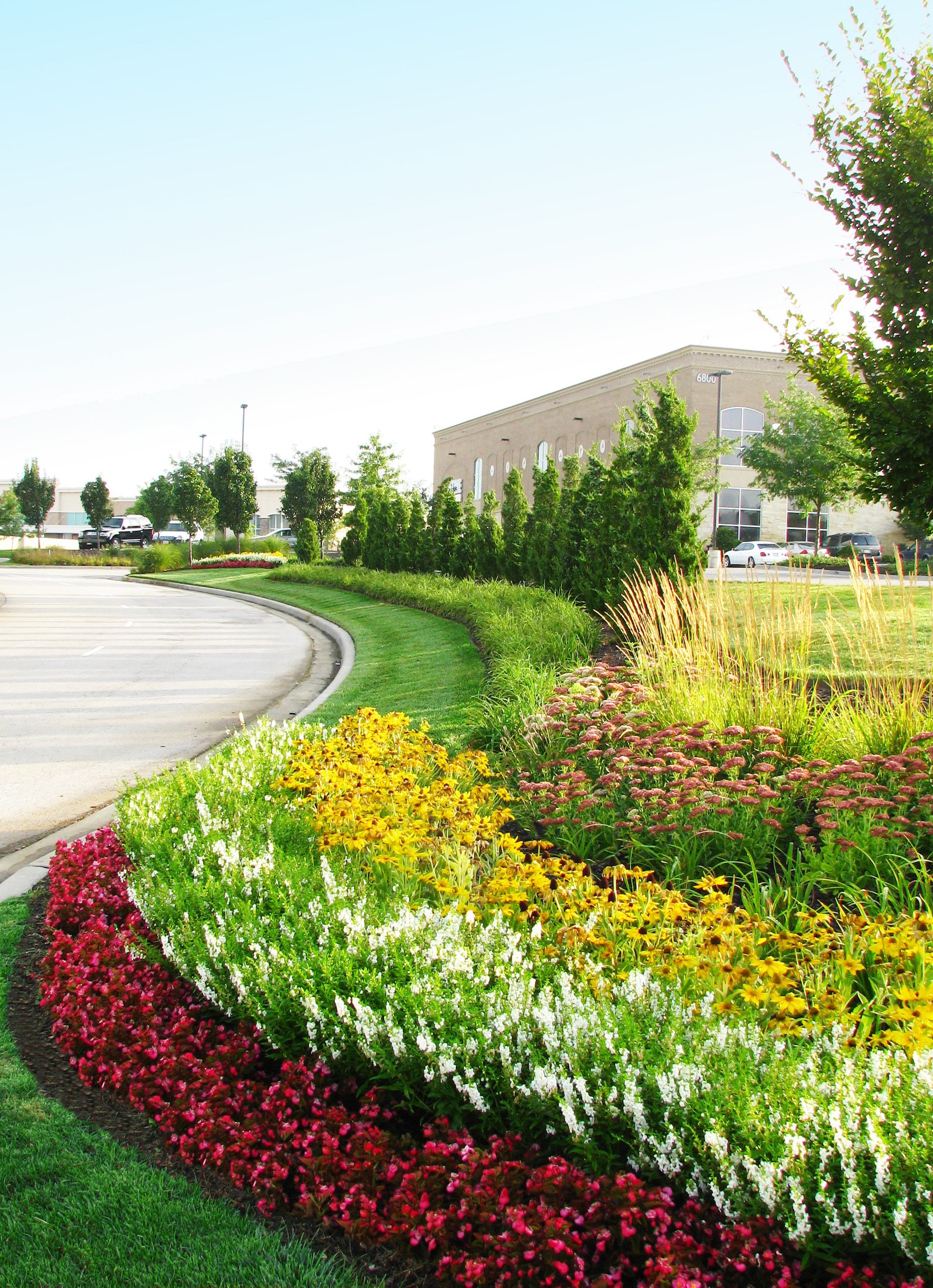Trusted Landscaping Company Jacksonville: High Quality Landscaping Services for Your Home
Wiki Article
Elevate Your Property's Aesthetic With Sustainable Landscaping Layouts and Eco-Friendly Practices
:strip_icc()/backyard-fire-pit-sitting-area-1d11b44c-0d65ae40eea741f5a964ae9b91d0fdbf.jpg)
Benefits of Lasting Landscape Design
Carrying out lasting landscaping practices not just saves natural resources yet also promotes biodiversity and boosts general environmental health. One significant benefit is the reduction of water consumption via the use of drought-resistant plants, rainfall yards, and efficient irrigation systems.In addition, lasting landscape design can improve dirt health and wellness by minimizing making use of chemical fertilizers and pesticides, thereby producing a healthier atmosphere for plant development and helpful soil microorganisms. This, consequently, boosts the general resilience of the landscape to withstand environmental stress factors and climate adjustment impacts - bush removal Jacksonville. In addition, sustainable landscape design methods can bring in diverse wild animals, including pollinators like and butterflies, promoting a more lively and well balanced environment within the residential property
Incorporating Native Plants
To develop upon the benefits of sustainable landscape design, a calculated concentrate on including indigenous plants can further boost ecological durability and promote biodiversity within the landscape. Native plants are species that naturally occur in a particular area and have developed to flourish in the regional climate, soil conditions, and ecosystem. By consisting of indigenous plants in landscape design layouts, homeowner can minimize water use, decrease the demand for chemical pesticides and plant foods, and sustain the neighborhood wild animals population.Incorporating native plants additionally aids in protecting the distinct character and identity of an area's flora. These plants commonly need less maintenance once developed, making them a sustainable and cost-efficient landscape design option in the future. Additionally, indigenous plants can draw in indigenous pollinators like butterflies and bees, contributing to the total health and wellness of the ecosystem.
When picking native plants for landscape design jobs, it is necessary to choose species that are fit to the details ecological conditions of the website. Consulting with regional nurseries or botanical gardens can provide useful assistance on picking the right native plants for a particular location. By integrating native plants right into landscaping designs, residential property proprietors can create gorgeous, lasting outdoor rooms that benefit both the environment and the area.

Water Preservation Techniques
Efficient watering approaches play a critical duty in lasting landscaping techniques, ensuring optimum water preservation efforts in outdoor rooms. Carrying out techniques such as drip irrigation, rain harvesting, and clever watering systems can dramatically minimize water wastefulness while keeping a healthy landscape. Drip watering provides water directly to the origins of plants, decreasing dissipation and drainage. Rainwater harvesting entails accumulating rain from roofs and saving it for later usage in irrigation, reducing why not try this out the dependence on metropolitan water resources. Smart irrigation systems make use of climate data and soil dampness levels to adjust sprinkling schedules, avoiding overwatering and promoting water effectiveness.In enhancement to advanced watering methods, xeriscaping is an additional water-saving landscape design method that concentrates click for more info on utilizing drought-resistant plants, compost, and efficient watering to develop a low-water landscape design - landscaping company Jacksonville. By choosing native plants that are well-suited to the regional environment and soil problems, homeowner can decrease the need for extreme watering, inevitably preserving water and advertising a lasting outdoor environment
Eco-Friendly Hardscaping Ideas
Enhancing outdoor rooms with environment-friendly hardscaping functions can contribute substantially to lasting landscaping methods. Choose for products like redeemed timber, recycled concrete, or natural stone to lessen environmental impact when considering hardscaping elements. These products not just include an unique visual allure to your exterior room yet also decrease the need for new resources extraction.Applying absorptive paving options such as crushed rock or absorptive concrete can help in reducing water runoff and promote groundwater recharge. These choices permit rain to permeate right into the ground, protecting against disintegration and reducing the worry on stormwater systems.
Incorporating indigenous plants right into hardscaping layouts can even more improve eco-friendliness by supporting neighborhood wild animals and decreasing the need for too much watering or chemical treatments. By including vertical yards or green wall surfaces, you can introduce a lot more greenery into metropolitan settings, boosting air top quality and biodiversity.
Integrating energy-efficient lighting, such as solar-powered LEDs, right into hardscaping styles can decrease electrical power intake and reduced your residential or commercial property's carbon impact. Focusing on eco-friendly hardscaping concepts not only boosts the charm of your exterior area but additionally demonstrates a dedication to environmental stewardship.
Upkeep Tips for Sustainable Landscapes

Consistently prune plants to promote healthy and balanced development and avoid overgrowth that can lead to pest infestations or diseases. Usage natural plant foods to nurture the dirt and plants without damaging chemicals that can seep right into the environment.
Conclusion
To conclude, sustainable landscape design techniques supply various advantages for homeowner, from enhancing the aesthetic allure of the surroundings to advertising environmental preservation. By integrating native plants, applying water conservation methods, and using environmentally friendly hardscaping concepts, homeowner can create beautiful landscapes that are also eco liable. With appropriate maintenance, lasting landscapes can grow and contribute to a much healthier ecological community for both people and wild animals.In addition, lasting landscaping can enhance dirt wellness by decreasing the usage of chemical plant foods and chemicals, thereby creating a healthier environment for plant growth click reference and valuable dirt microorganisms.To build upon the advantages of sustainable landscaping, a calculated focus on integrating native plants can additionally enhance environmental resilience and advertise biodiversity within the landscape. By including indigenous plants in landscape design styles, home owners can decrease water use, minimize the demand for chemical pesticides and fertilizers, and support the neighborhood wild animals population.
These plants usually call for less upkeep once developed, making them a lasting and economical landscape design solution in the lengthy run. By integrating native plants right into landscaping styles, building owners can produce beautiful, sustainable outdoor spaces that profit both the area and the environment.
Report this wiki page